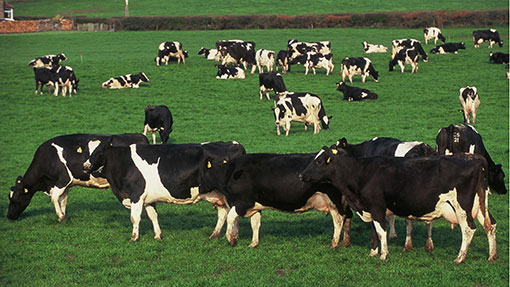Top dairy farms keep cost of production down

The most profitable British dairy farms only have a slightly better milk yield but use fewer resources more cheaply, DairyCo’s Milkbench+ survey has revealed.
In 2012/13, the top 25% performing farms had a milk yield 93 litres/cow higher than the bottom 25%, while feeding 568kg less dry matter/cow and employing 22 hours/cow fewer of manual labour.
The cost of production on a top 25% farm was 27.2p/litre, giving a net margin of 5.3p/litre, while the production cost on the bottom 25% was 39.2p/litre, leaving a net margin of -8.7ppl.
Best performing farms had an average of 250 cows, grazed 25 weeks a year and had an average yield of 7,014 litres per cow.
See also Post quota – how to make the most of milk
The main factors separating the top and bottom performers were feed cost, labour cost, power and machinery cost and depreciation.
Senior dairy consultant at Scotland’s Rural College Jimmy Goldie said this kind of benchmarking was a good tool for farmers.
“It is useful in looking to see some of the individual costs on different farms to see what costs are possible, to see what farmers should be aiming for,” he said.
“Every farm is different. You can look at it and see I am average because of this or better than average because of this.
“It is not necessarily the system you are doing but how you use that system. Certain areas you have less control of and some areas you can concentrate on more.”
Regional consultancy manager for Promar International James Dunn said it was difficult to benchmark against these historic figures because they reflected the awful summer of 2012.
“That year in particular was a very bad year,” he said. “You are nearly better benchmarking against a five-year average. What we are seeing this year is a return to profitability.
The average cost of production across the 322 farms surveyed was 32.1p/litre and the average net margin was -0.9p/litre, as the cost of production jumped 3.2p/litre in a milk year blighted by bad weather and high feed prices.
Within the sample, levels of performance were more important to profitability than farm type.
Grass-based systems had an average production cost of 32.3p/litre, intensive systems had a production cost of 31.9p/litre, and mixed farm types had a production cost of 32.4p/litre.
Margins on grass-based farms were hit by the shorter grazing season, poor quality of grass silage and higher feed prices, while more intensive systems were affected by having to feed more grass silage instead of maize, higher constituent levels caused by changes in rations and lower yields.
DairyCo senior product manager for dairy economics Rachael Chamberlayne said the report gave a snapshot of British dairy farming.
“It examines just how difficult it can be to make a profit, especially in the time frame 2012/13 that the analysis addresses,” she said.
“Yet, there are strong indications many dairy farmers have the opportunity to take positive steps in managing their costs that could significantly increase financial returns.”
The sample covered by the Milkbench+ report does not claim to be statistically representative of the GB dairy sector and included 120 mainly grass-based farms, 72 largely housed units with more intensive inputs and 130 that used a mixed system.
